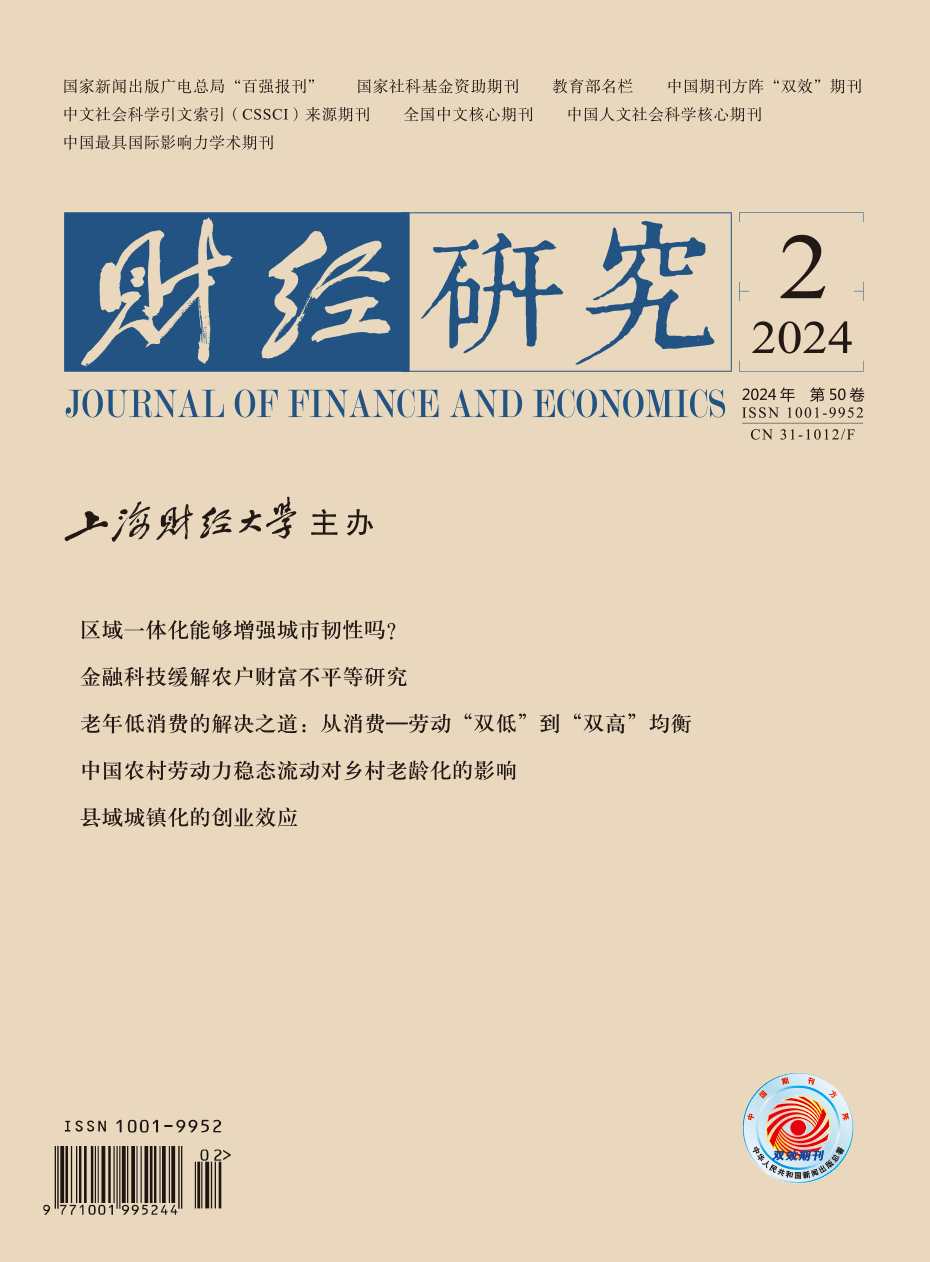中国微观和全球宏观数据显示,老年人口的储蓄率论有所偏离,意味着老龄化会进一步导致消费萎缩。文章构建跨期决策模型发现,当总效用不变时,消费可以被闲暇替代,家庭决策存在“低消费、低劳动”和“高消费、高劳动”两种均衡。当对最低劳动施加约束时,老年人会从“双低”均衡转向“双高”均衡。经验证据支持了理论结论:(1)老年家庭的消费—闲暇替代弹性约为3,表明当相对价格变化1个百分点时,消费和闲暇的相对比例将变化约3个百分点。(2)当消费—闲暇替代弹性上升1时,储蓄率上升6.73个百分点。2016—2019年间,老年家庭这一弹性平均每年上升0.86,对应储蓄率每年上升5.80个百分点。(3)在考虑了预防性动机、长寿动机和遗赠动机等竞争性解释后,消费—闲暇替代仍可以解释老年人的高储蓄。总的来说,文章的理论意义在于从消费—闲暇替代关系中解释了老年人消费—劳动的“双低”均衡。基于此,文章认为,释放老年群体劳动潜力,实施延迟退休年龄政策,有利于从“双低”均衡转向“双高”均衡,实现消费和劳动供给双重稳定。
老年低消费的解决之道:从消费—劳动“双低”到“双高”均衡
摘要
参考文献
相关附件
思维导图
8 Arrow K J,Dasgupta P S. Conspicuous consumption,inconspicuous leisure[J]. The Economic Journal,2009,119(541):F497−F516. DOI:10.1111/j.1468-0297.2009.02318.x
9 Attanasio O P. Cohort analysis of saving behavior by U. S. households[J]. The Journal of Human Resources,1998,33(3):575−609. DOI:10.2307/146334
10 Bárány Z L,Coeurdacier N,Guibaud S. Capital flows in an aging world[J]. Journal of International Economics,2023,140:103707. DOI:10.1016/j.jinteco.2022.103707
11 Boar C. Dynastic precautionary savings[J]. The Review of Economic Studies,2021,88(6):2735−2765. DOI:10.1093/restud/rdab012
12 Buric M N,Raicevic M,Kascelan L,et al. Socio-demographic impacts on the personal savings portfolio choice:A decision tree approach[J]. International Journal of Business Analytics,2022,9(1):1−23.
13 Chamon M,Liu K,Prasad E. Income uncertainty and household savings in China[J]. Journal of Development Economics,2013,105:164−177. DOI:10.1016/j.jdeveco.2013.07.014
14 Chamon M D,Prasad E S. Why are saving rates of urban households in China rising?[J]. American Economic Journal:Macroeconomics,2010,2(1):93−130. DOI:10.1257/mac.2.1.93
15 Danziger S,Van Der Gaag J,Smolensky E,et al. The life-cycle hypothesis and the consumption behavior of the elderly[J]. Journal of Post Keynesian Economics,1982,5(2):208−227. DOI:10.1080/01603477.1982.11489357
16 Eichenbaum M S,Hansen L P,Singleton K J. A time series analysis of representative agent models of consumption and leisure choice under uncertainty[J]. The Quarterly Journal of Economics,1988,103(1):51−78. DOI:10.2307/1882642
17 Gibson J,Scobie G. A cohort analysis of household income,consumption and saving[J]. New Zealand Economic Papers,2001,35(2):196−216. DOI:10.1080/00779950109544339
18 İmrohoroğlu A,Zhao K. The Chinese saving rate:Long-term care risks,family insurance,and demographics[J]. Journal of Monetary Economics,2018,96:33−52. DOI:10.1016/j.jmoneco.2018.03.001
19 Kim S,Lee J W. Demographic changes,saving,and current account in east Asia[J]. Asian Economic Papers,2007,6(2):22−53. DOI:10.1162/asep.2007.6.2.22
20 Li X,Li Z G,Chan M W L. Demographic change,savings,investment,and economic growth:A case from China[J]. The Chinese Economy,2012,45(2):5−20. DOI:10.2753/CES1097-1475450201
21 Mirer T W. The wealth-age relation among the aged[J]. The American Economic Review,1979,69(3):435−443.
22 Modigliani F,Brumberg R. Utility analysis and the consumption function:An interpretation of cross-section data[A]. Kurihara K. Post Keynesian economics[M]. New Brunswick:Rutgers University Press,1954.
23 Rosenzweig M,Zhang J S. Co-residence,life-cycle savings and inter-generational support in urban China[R]. NBER Working Paper No. 20057,2014.
引用本文
易祯, 朱超. 老年低消费的解决之道:从消费—劳动“双低”到“双高”均衡[J]. 财经研究, 2024, 50(2): 63-77.
导出参考文献,格式为:





 3613
3613  4653
4653


